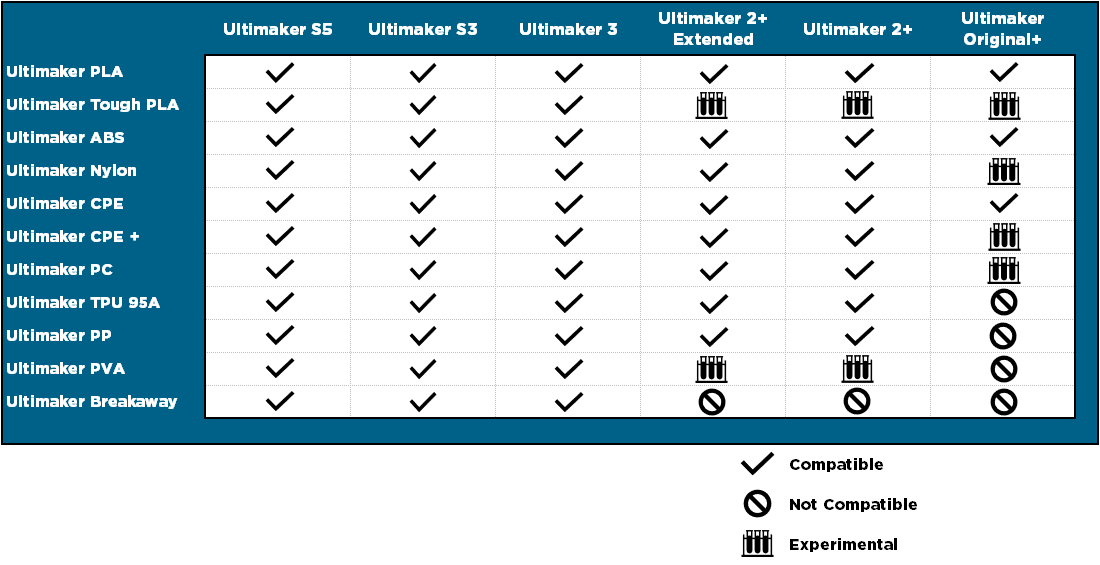
This is an area in which the range of Ultimaker 3D printers shines in comparison to other offerings on the marketplace as they can employ a huge range of materials. Also, as you can learn in the Ultimaker 3D Printer Material Guide, there is a huge range of filament materials available to complement this attribute with each type possessing unique properties and characteristics. It is worth noting however that between different Ultimaker 3D printer models there is some variation as to what materials can be used effectively. Some material use will be seen as experimental, requiring more effort by the user to print successfully, and earlier Ultimaker 3D printers have some material limitations.
So I'll help clarify! In this guide, we’ll explore:
- Ultimaker Material Compatibility for Ultimaker 3D Printers
- Downloads – Technical Datasheets and Safety Datasheets
If you've got any questions, queries or things to add to this topic please let us know your thoughts!
Ultimaker Material Compatibility for Ultimaker Machines
In the chart below you’ll be able to see which Ultimaker materials are officially supported, seen as experimental or flat out not recommended for Ultimaker 3D printers. As you will see a few Ultimaker materials are not fully compatible with every Ultimaker 3D printer.
All Ultimaker materials have print profiles specifically tested and developed for use on Ultimaker 3D printers. These are pre-set and installed in Ultimaker Cura which is the open-source 3D printer slicing software created by Ultimaker. All these values have been based on single-extrusion prints using a 0.4 mm nozzle head and materials seen as experimental will likely require setting refinement to produce prints at the best capacity.
Worth noting Ultimaker 3D printers has an open filament system, meaning third-party materials can be used, so this is by no means a complete picture of all possible material choices.
Once you’ve selected a compatible Ultimaker material for your Ultimaker printer all that’s left to do is decide on a couple of parameters in Ultimaker Cura. You’ll be saved from the meticulous work of fine-tuning and instead be ready to print! Very exciting indeed.
Downloads – Technical Datasheets and Safety Datasheets
Attachment - Ultimaker_Safety_and_Technical_Data_Sheets.zip
Comments



